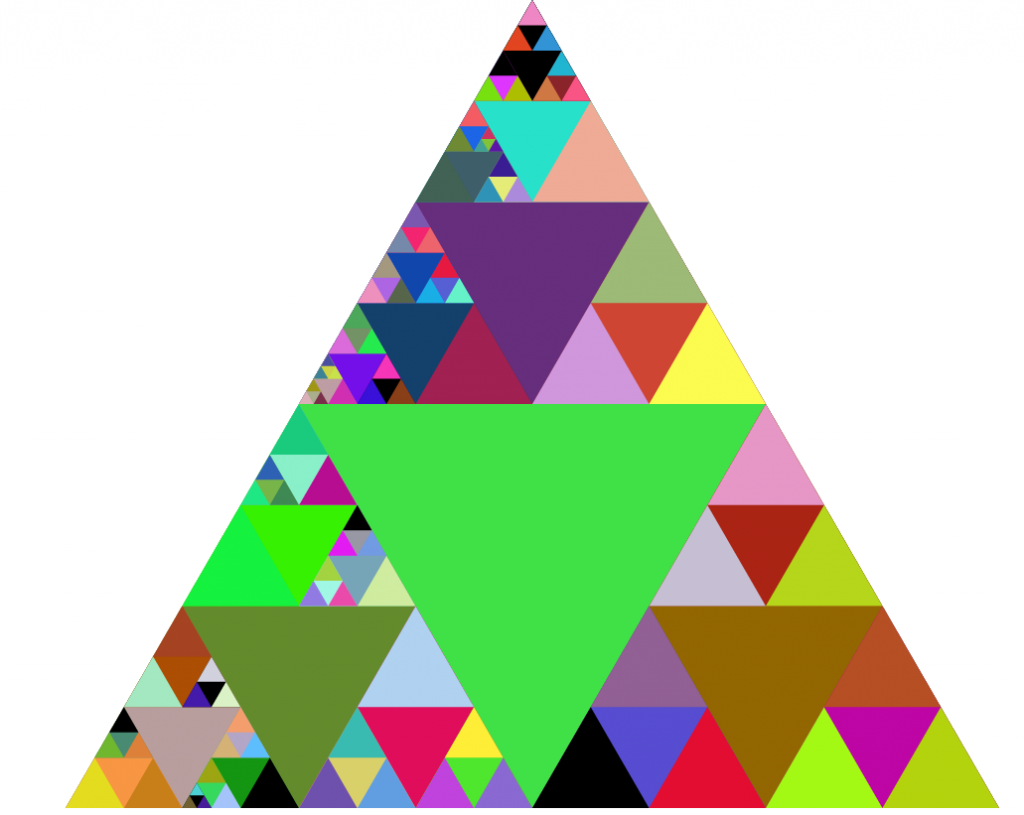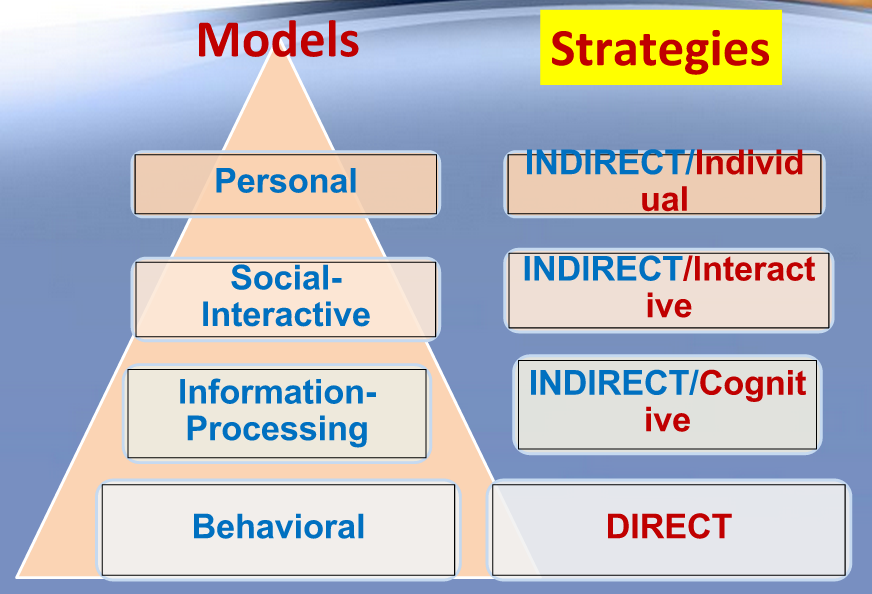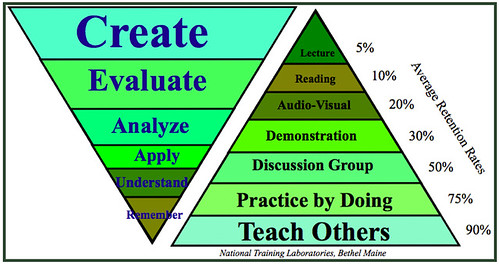 |
| How many triangles does it take to understand the field of education? |
Information Coming Together
Within any professional field, it is common to have many perspectives and theories that come together and influence how professionals behave. The field of education is no exception. Through my classes and research articles, I have learned of many psychological schools of thought and educational methods. However, this past week's classes, in particular Dr. Smirnova's PowerPoint, "Teaching to Learn through Multiple Assessments and Evaluation," and the article, "Approaches to Instruction," I came to better understand how all of the theory fits together (i.e., the relationship between models, strategies, methods, and assessment).
The Triangles in Question
At first all of the triangles seem overwhelming, but upon closer examination it becomes clear that all of the ideas complement, not contradict, one another.
These triangles above indicate that instruction moves from more factual knowledge which is taught through direct strategies consistent with the behavioral model, and then moves up through information-processing, including the inquiry method, to form concepts, to the social-interactive model, housing the cooperative learning method, to help create generalizations through group analysis, and then the personal model to develop meta-cognitive skills. Furthermore, this instructional hierarchy directly parallels the thinking processes and assessment methods in the triangles below. Understanding the learning pyramid's assertion that students retain the most information when they have taught it to others and practiced by doing, and the least from lecture, helps to explain why the hierarchy of both instruction and assessment is arranged with the behavioral model on the bottom. Bloom's taxonomy, in line with the other triangles, shows how assessing students' knowledge and understanding moves from lower-order thinking skills to higher-order thinking skills. Overall, the way I try to make sense of this plethora of information is to think of the interrelated instruction and assessment hierarchies as a continuum for teaching students. On the one side, a teacher can utilize the behavioral model, based on an essentialist educational philosophy, and provide a lecture to students to provide them with facts and then test their knowledge by asking them to remember certain details on a paper-and-pencil test, after which students will only retain five to ten percent of the information. On the other side, students can be led to build meta-cognitive strategies in which they evaluate their own thinking while creatively completing projects and portfolios and retaining almost 90% of information through authentic tasks based on the real-world when their teacher embraces the reconstructionist educational philosophy and thus utilizes the personal model. In the middle of course are the information processing and social interaction models which allow students to problem-solve and work with their peers to understand, apply, and analyze information.
A strong teacher will utilize all of this information in planning his or her lessons, incorporating all models, strategies, methods, and assessment options to ensure that students can successfully achieve all of the levels of achievement proposed by Bloom and Bruner and retain information long-term. As the movie below shows, teaching has and will continue to move up the triangular hierarchy to meet the needs of students:
 Into the Future: Triangles at Work
Into the Future: Triangles at Work
It is my hope that by learning the different options available for instruction and assessment, and the theories that converged to form them, that I will be able to teach from a vast toolbox of methodologies and will not be a single method teacher. Furthermore, I want my unit plans to follow the guide presented so that students have the chance to progress through the hierarchy and learn problem-solving, social, and self-evaluation skills that might not be actualized if only the behavioral model is implemented. I understand that by providing students with the opportunities to work within all of the models, I will better prepare them for civic competence, the ability to function within a society that requires them to do more than just remember (the first stage of Bloom's taxonomy).
Works Cited
Bloom's Taxonomy. (n.d.). Retrieved January 31, 2015, from http://cft.vanderbilt.edu/guides-sub-pages/blooms-taxonomy/
Delafosse, S. (2011, October 24). Teaching in the 21st Century. Retrieved February 2, 2015, from https://www.youtube.com/watch?v=075aWDdZUlM
Saskatchewan Education. Instructional Approaches: A Framework for Professional Practice. Regina, SK: Saskatchewan Education.
Smirnova, L. (2015). Teaching to learn through multiple assessments and evaluation [PowerPoint slides]. Retrieved from https://docs.google.com/a/my.msmc.edu/presentation/d/1H_P9vuT9lCHPhfpPWC8Hj9uW1v5dOa6V0TRIlvlQTg0/present?slide=id.p14





No comments:
Post a Comment